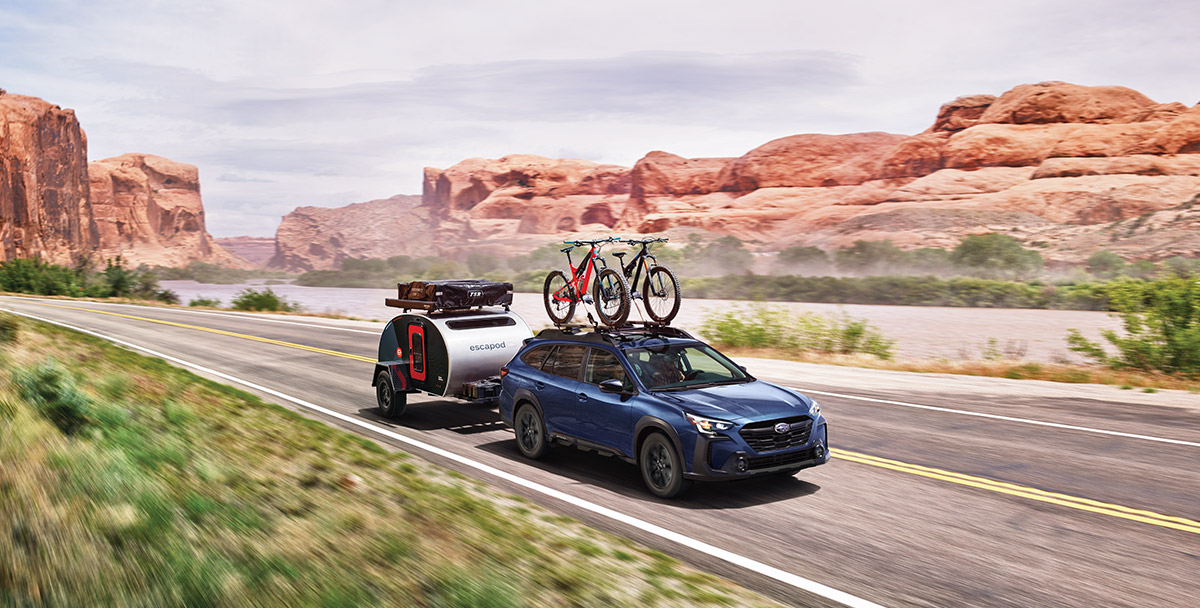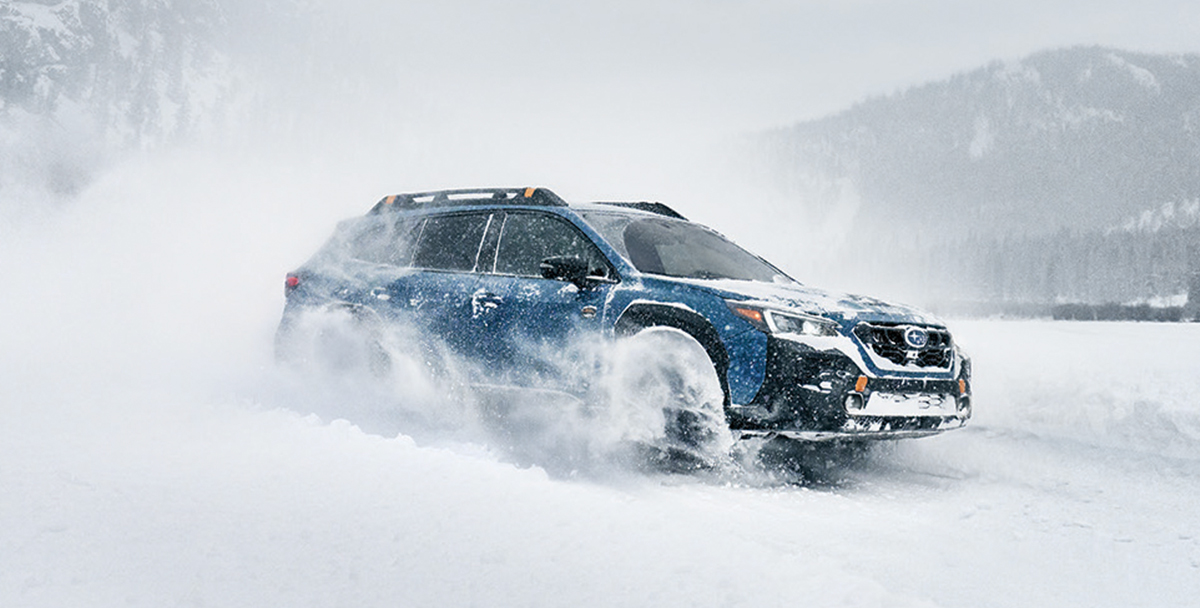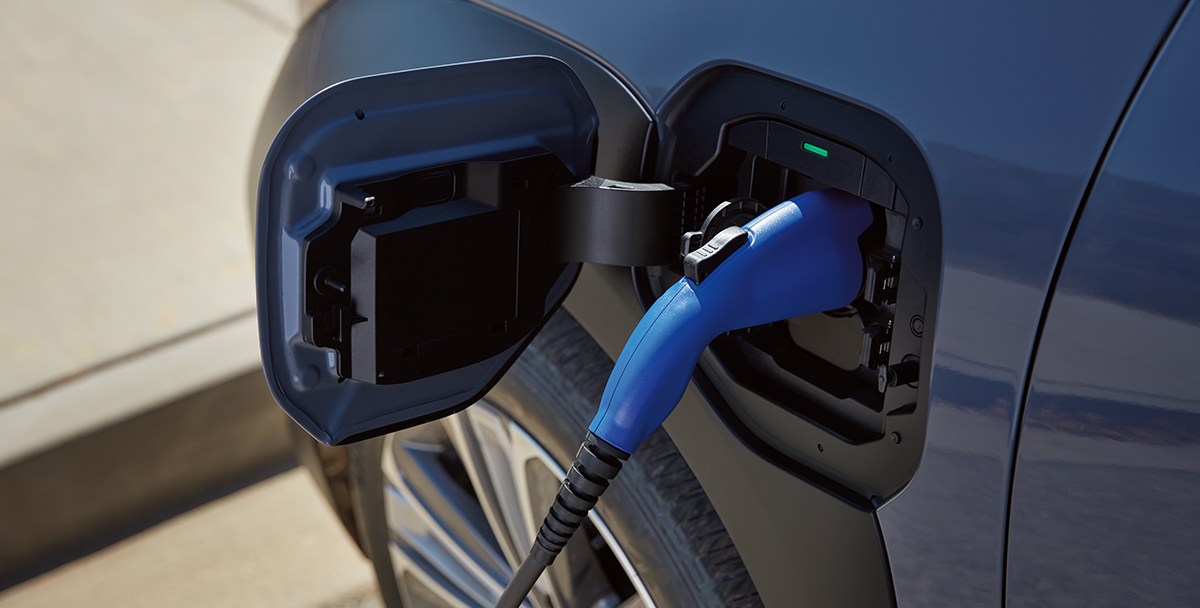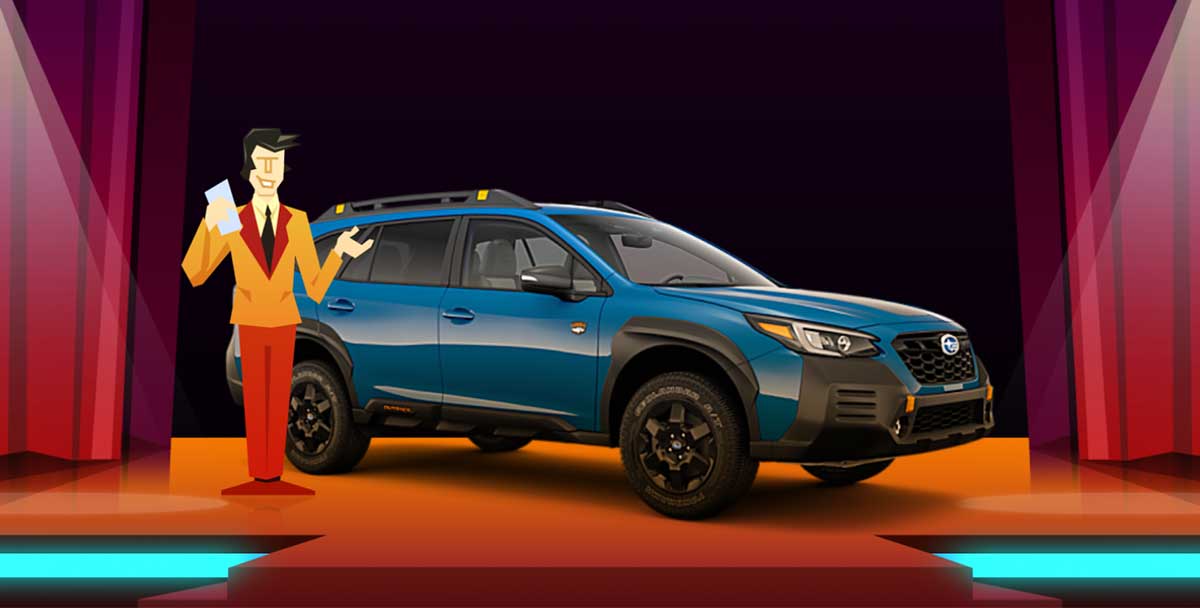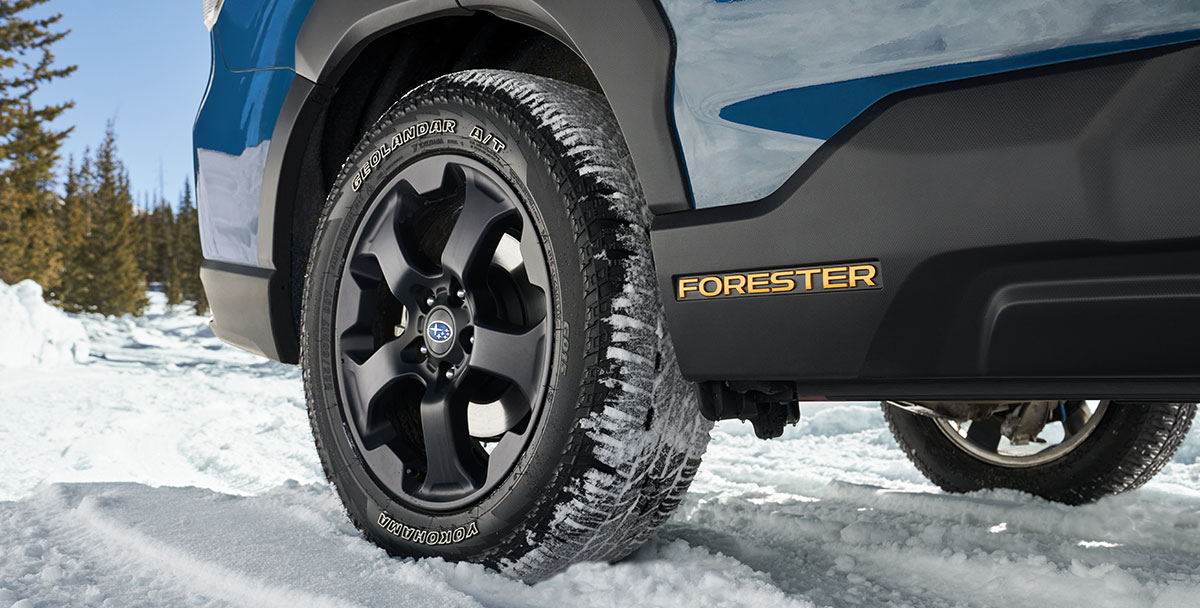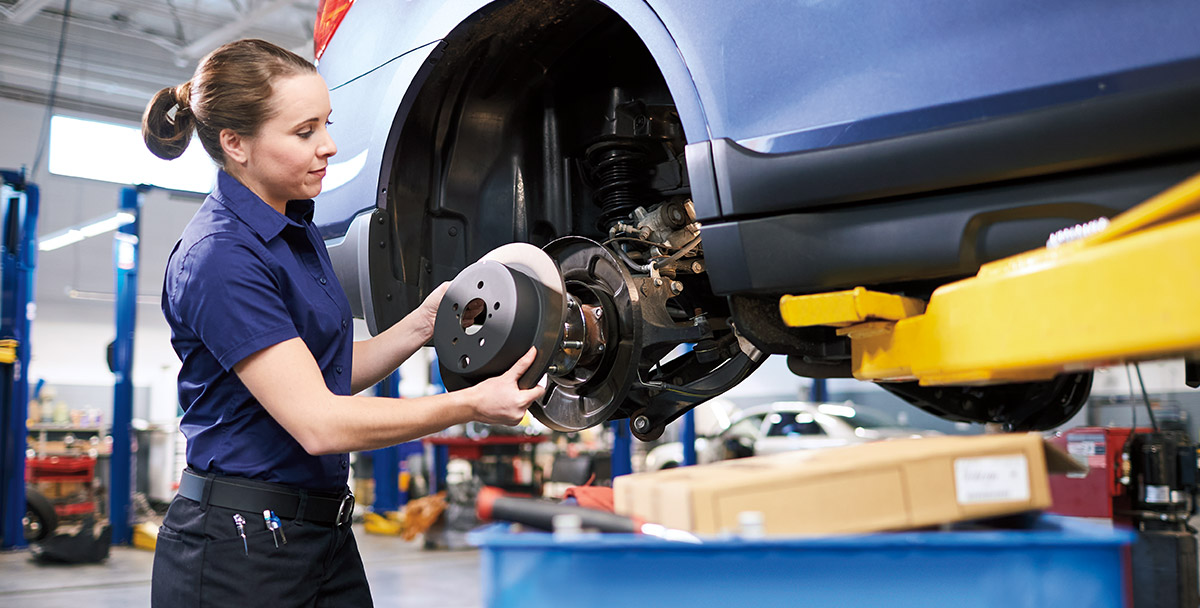When we talk about “road trip season,” we’re usually focused on that precious handful of weeks between the time the kids get out of school and Labor Day. But you’re driving a Subaru – road trip season is all year long. Here are some essentials to ensure you’re ready for any winter trip.
1. Equip Your Vehicle With Winter Tires
Two things make winter tires vital: They have a more aggressive tread pattern that allows the tire’s tread to cut through snow and maintain as much grip as possible, even in icy conditions. Less evident is the rubber compound. An all-season tire loses its flexibility as temperatures drop below freezing, while the rubber compound in a winter tire stays pliable all the way to subzero temperatures.
2. Invest in a Jump-Starter
The smallest jump-starters are the size of a power bank for charging smartphones, and they easily stash in the glovebox or center console. Depending on which features you choose, it can be equipped with rechargeable flashlights or emergency beacons. Look not only for size but also the amperage to make sure it offers enough instant starting amps to spin the starter in your Subaru. Anything around 800A is plenty.
You can find a smaller jump-starter, but we’ve discovered that the Viking Lithium Ion Jump-Starter and Power Pack ($79.99) works extremely well. It has 450 peak amps of cold-cranking power, a flashlight, an emergency beacon and a range of power cords to charge all of your mobile devices. We’ve used it multiple times over the years to fire up everything from a small four-cylinder to a large V-8 from the 1970s, and it’s worked perfectly for at least three years.
3. Check Your Tire Pressure and Consider Nitrogen
All Subaru vehicles sold in the United States since 2007 have a Tire Pressure Monitoring System (TPMS) that alerts the driver if any of the tires have lost a specific percentage of air pressure. You may have noticed that your TPMS alert comes on when the temperature drops suddenly overnight. It’s because the air pressure inside your tires can drop 1 psi with every 10-degree drop in temperature. One way to avoid this is to fill your tires with nitrogen rather than air. Nitrogen isn’t as susceptible to pressure fluctuation due to temperature.
4. Keep a Snow Brush Handy
Vehicles such as the Subaru Crosstrek, Forester, Outback and Ascent have a high roofline that makes for excellent visibility and headroom inside, though roof rails may make clearing snow tricky. Look for an extendable snow brush or a foam snow rake that clears the snow by pulling rather than swiping the snow to the side.
We recommend the Hopkins® 14026 SubZero® 26” Crossover Super Duty Pivoting Head Snowbroom With Integrated Ice Scraper ($29.69). It’s long enough to clear the snow off the roof of your Ascent and offers a scraper you can really lean into to get the ice off the windshield.
5. Use an Eco-Friendly Ice Melter
Don’t just scatter rock salt all over the place this winter – the salt eats concrete and irritates animal paws. Look for ice melter that uses calcium magnesium acetate (CMA) as the melting agent. CMA is a low corrosion, low toxicity alternative that works fast and lasts a good long time.
Try ecoTraction™ Pro ($29.95) as a natural alternative to traditional salt-based ice melters. It’s made of a volcanic mineral and doesn’t melt at all but has a sharp, irregular structure that provides grip on icy surfaces. In fact, it lasts so long you can sweep it up and reuse it after the ice has melted.
6. Bring a Tow Strap
For around $20-$40, a tow strap not only helps you get out of sticky situations, but it could help others too. Tow straps often come in kits, but a nylon strap with two hooks is generally enough to get you moving again and will usually fit in the spare tire well.
Avoid the temptation of buying a cheap strap. They’re often rated for 7,000 pounds, which sounds like enough, but you want something more like 20,000 pounds. If you’re good and stuck, a recovery strap is designed to absorb the shock of snatching you out of a muddy hole, so you want something built for the purpose. The Smittybilt® 1 CC220 ($32.99) is plenty of strap for the money.
7. Get a Cooling System Check
Automotive coolant stays liquid at temps far below those most Earth residents are ever likely to see. Check the maintenance schedule in your warranty booklet to find out exactly when your model requires a coolant flush and fill. At that time, it’s also a good idea to talk to your service advisor about replacing belts and hoses, along with the idler pulley that keeps tension on the serpentine belt.
1 Smittybilt is a registered trademark owned by Tap Worldwide, LLC.
